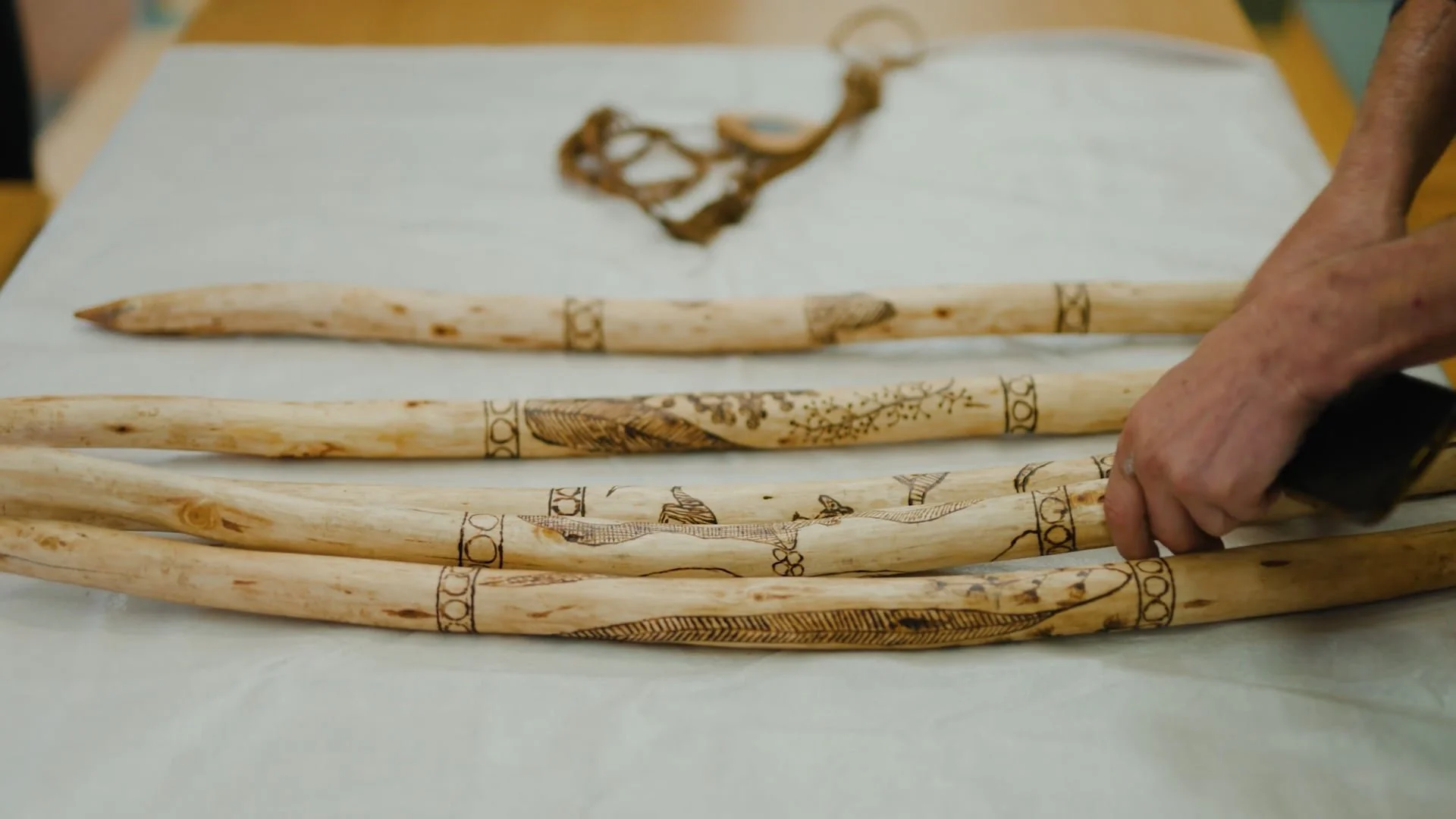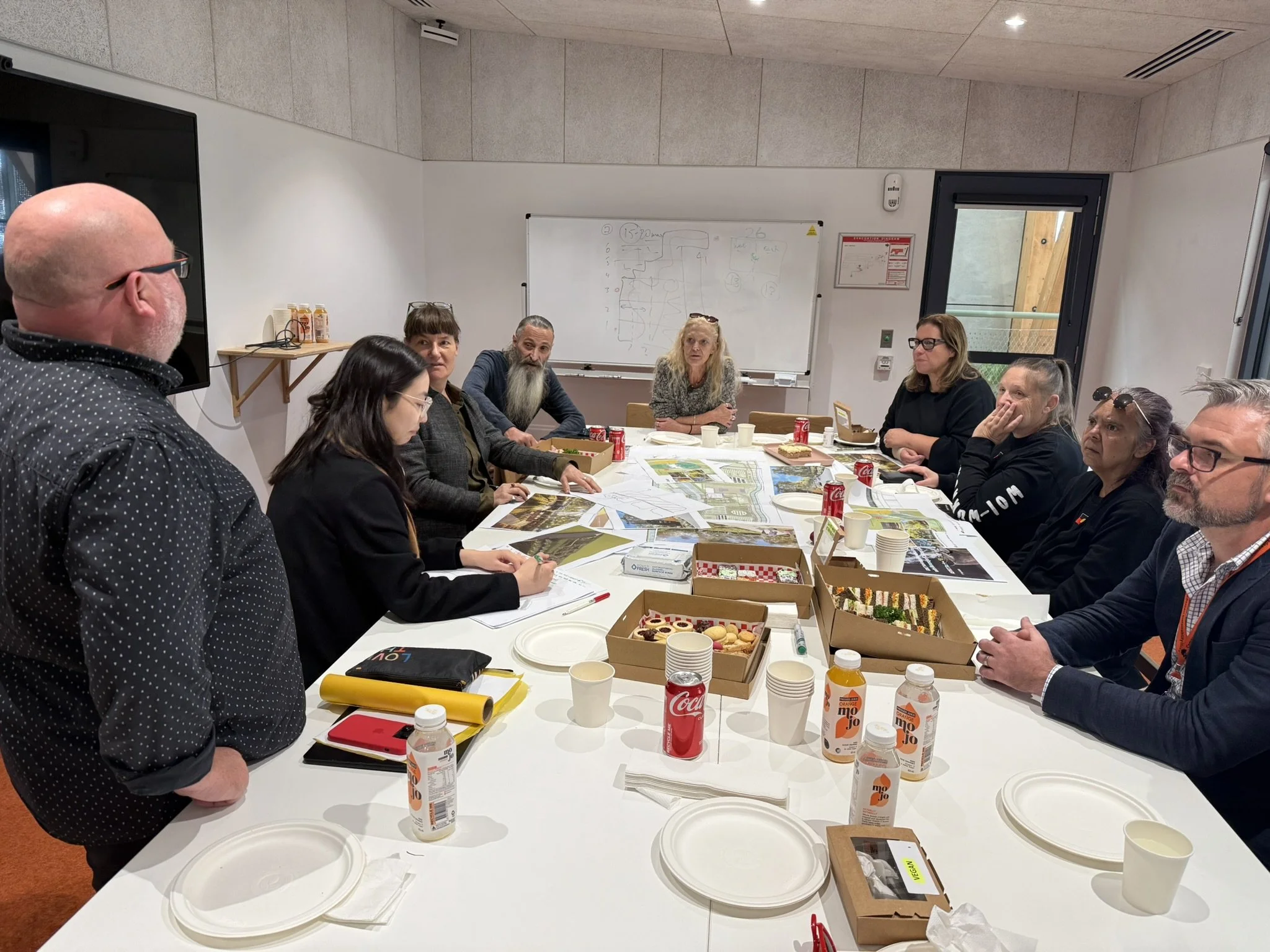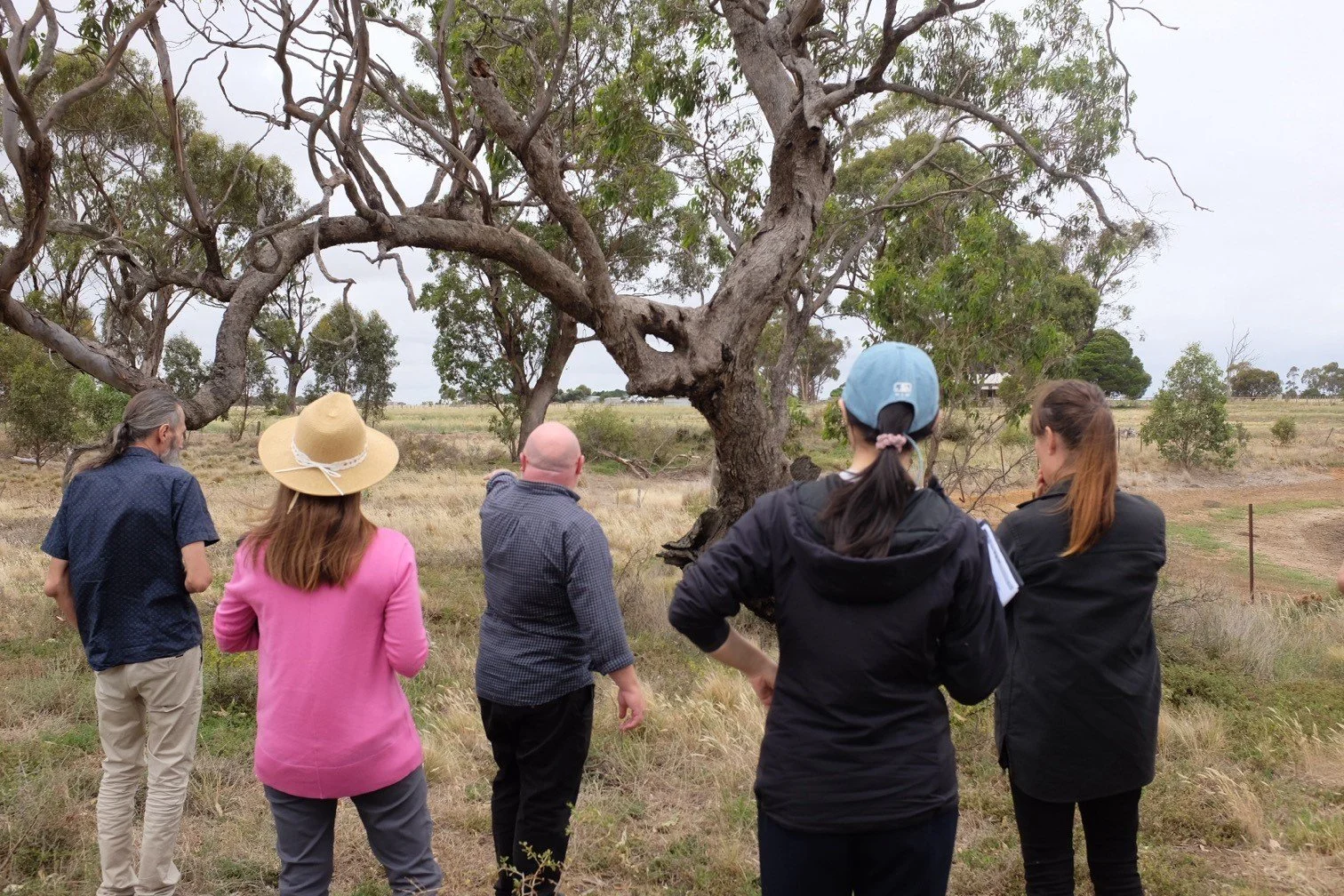Building Harkness Memorial Park: Caring for Country
Commissioned hand-carved Wurundjeri digging sticks featuring intricate designs of plants and animals.
How do you honour the deep cultural heritage of a place while building for the future? For Harkness Memorial Park, the answer lies in genuine partnership with Traditional Owners and a commitment to caring for Country.
In the third video of our Building Harkness Memorial Park series, we explore how collaboration with Wurundjeri Traditional Owners is shaping the project – from landscape design to cultural recognition, honouring ancestral knowledge and community connection.
A partnership rooted in respect
Since 2021, GMCT has collaborated closely with Wurundjeri Traditional Owners, including Uncle Colin Hunter Jnr, Aunty Gail Smith, and Aunty Julieanne Axford. Their guidance and feedback has fundamentally shaped the design and vision for Harkness Memorial Park.
“It’s been a pleasure working with GMCT on this project,” says Aunty Julieanne Axford, seated next to Aunty Gail Smith, who adds, “not only have they heard what we’ve said, they’ve listened.”
“I think that’s very important – they listen. They’re not just letting it go in one ear and out the other,” agrees Aunty Julieanne.
This partnership goes far beyond consultation. Our approach has been built on an ongoing relationship of genuine engagement and respect.
“The process we use is we yarn up and we talk about how we see things,” says Uncle Colin Hunter Jr. “And, most of the time, we’re getting it really right. So it’s the listening, I think. It’s the deep listening.”
For GMCT, deep listening means taking the time to understand Wurundjeri history and culture, sitting down for yarning sessions, and most importantly, ensuring that Traditional Owners’ perspectives actually shape design decisions. It means coming back to the conversation repeatedly, checking in that we’re getting it right, and being willing to adapt.
The result is a memorial park designed to respect and celebrate Aboriginal culture and history, honouring the rich significance of the site to the Wurundjeri people as the Traditional Custodians of the land.
“I’m very proud of the design,” reflects Aunty Gail, as Aunty Julieanne adds, “it’s connecting our culture to Country.”
GMCT Built Environment team and Traditional Owners gathered to discuss the site’s plans.
Caring for and healing Country
The ‘caring for Country’ theme has become central to the park’s development. Harkness Memorial Park is designed to honour the land – caring for and healing Country in ways that reflect Traditional Owners’ deep understanding of place.
“You look at the site, and it’s just a big flat site but, until you start to actually see the drawings, you start to see…what’s going to come from it,” explains Uncle Colin.
Our ongoing partnership with the Traditional Owners has revealed a living landscape with deep cultural significance that lies beneath what might appear to be ordinary farmland. Their stories, cultural protocols, and land management practices spanning thousands of years are now being woven into the park’s design.
One of the most tangible expressions of this commitment is the co-designed outdoor gathering space, created for smoking ceremonies, reflection, and cultural exchange. From the seating layout to the selection of materials, landscaping and water elements, Wurundjeri guidance has shaped a space that speaks to both cultural practice and connection to Country.
The intimate setting will feature a central smoking bowl for ritual and community use. Manna Gums and Golden Wattles - trees significant to the Wurundjeri people - will provide shade, while the gentle sound of flowing water frames the space.
The site itself holds cultural significance, with more than 100 mature grey box trees, some several hundred years old and bearing cultural marks made by Wurundjeri ancestors. Their protection reinforces the principle of ongoing care for Country, and the need to honour the enduring presence of the past.
A place for shared cultural experiences
Central to the vision for Harkness Memorial Park is its role as a place of education and connection - bringing people together in the spirit of inclusivity and reconciliation, while sharing Wurundjeri culture and creating space for many cultural stories.
“I want it to be a place of education too… [an] educator on Wurundjeri culture,” says Uncle Colin.
“We’re such a multicultural society…there’s going to be so many different cultures and religions out there, and they all do their ceremonies different.”
This multicultural reality is at the heart of the park’s inclusive design. The park welcomes families from all backgrounds, offering a place where different traditions can be honoured alongside Wurundjeri culture. Whether families come to remember loved ones, participate in cultural ceremonies, or simply find quiet reflection, the space is designed to embrace everyone.
“There’s going to be a lot of emotions flowing, I would imagine,” reflects Uncle Colin. “So you want the place to be a reflection place. Feeling peace, I think, too. Their loved ones are in a good place.”
This represents an evolution in how memorial parks can serve their communities – not just as places of remembrance for individual families, but as spaces that foster broader understanding and respect for the diverse cultural heritage that makes up modern Australia.
GMCT team and Traditional Owners walking on Country at the Harkness Memorial Park development site.
A living, evolving partnership
The collaboration between GMCT and Traditional Owners of the land will continue to evolve as the park grows and develops over the coming decades.
“I just think it’s been a real collaborative process,” says Uncle Colin.
“For GMCT to take the time and effort to actually look into Wurundjeri history and culture and say, we want to show the rest of Melbourne what this is, you know.”
This commitment recognises that reconciliation and respect for Traditional Owners requires ongoing partnership. And the foundation we have built over the past four years, based on deep listening and shared decision-making, will continue to guide the relationship into the future.
As Victoria’s largest new cemetery development in over a century, Harkness Memorial Park demonstrates what genuine partnership can look like, with the potential to influence how future development projects approach Indigenous engagement and cultural recognition.
-
Harkness Memorial Park is redefining what a cemetery can be. As the Greater Metropolitan Cemeteries Trust’s (GMCT) first greenfield development, this landmark project will serve communities for generations to come.
Through a nine-part video series, titled Building Harkness Memorial Park, we’re taking you behind the scenes of Victoria’s largest new cemetery in the last century. Meet the people shaping this innovative space as we explore the vision, design, and community central to the park’s development.
Stay tuned for Part 4, The Customer, where we’ll explore the diverse range of services and memorialisation options being developed to meet the unique needs of Melbourne’s communities.
Keep up to date with the project
The first stage of Harkness Memorial Park is expected to open in early 2027.
Keep up to date with our progress by subscribing for project updates or exploring our development timeline.



